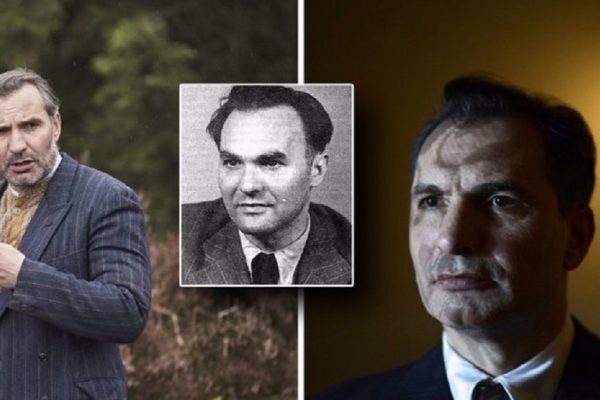On an unforgettable night in June 1942, the peaceful village of Lidice, Czechoslovakia, ceased to exist. It was neither earthquake nor flood that wiped this town from the verdant hills west of Prague; it was the dark evil of man’s nature. Nazi troops swept through the village as it slept, killing the men, deporting the women and children. The buildings were burnt to the ground and everything leveled; nothing remained, not even the cemetery. The massacre was the Nazis’ way of avenging the plot to assassinate the vicious S.S. leader Reinhard Heydrich (“Heydrich the Hangman”), whose term as regional governor had been a reign of terror. Shortly after Heydrich died of injuries from the assassination attempt, the retaliation began.
The horrors of Lidice became an emblem, a symbol of how a sleepy, innocent village could be swept up into the fascist terror. The intent was to obliterate the village—but it remained a potent memory. Other towns adopted the name and some parents gave it to girls born at the time. Lidice emerged as a symbol not just for Czechs, but also for the world. In 1957 the government of Great Britain planted a huge rose garden in the town, which was eventually rebuilt. Various works of art, including several moving pieces of music, memorialized the moment.
Memorial to Lidice
Czech composer Bohuslav Martinů was one of the first to recognize, in music, that terrible night in June 1942. His somber, eight-minute Memorial to Lidice remains the most effective statement on the Lidice massacre.
The following version is by the Czech Philharmonic Orchestra, conducted by Karel Ančerl and performed in Prague, in March 1957. We suggest you play the video (there are no images, just the still shown) and listen to the music as you finish reading the post…
Lidice was targeted as having harbored the soldiers who killed Heydrich and the punishment was devised by Hitler and Himmler themselves. Every adult male from the village was rounded up and taken to a farm on the outskirts of the village where they were shot down ten at a time. The women and children were then separated and sent to separate concentration camps. The village itself was completely razed, with even the buried dead being destroyed.
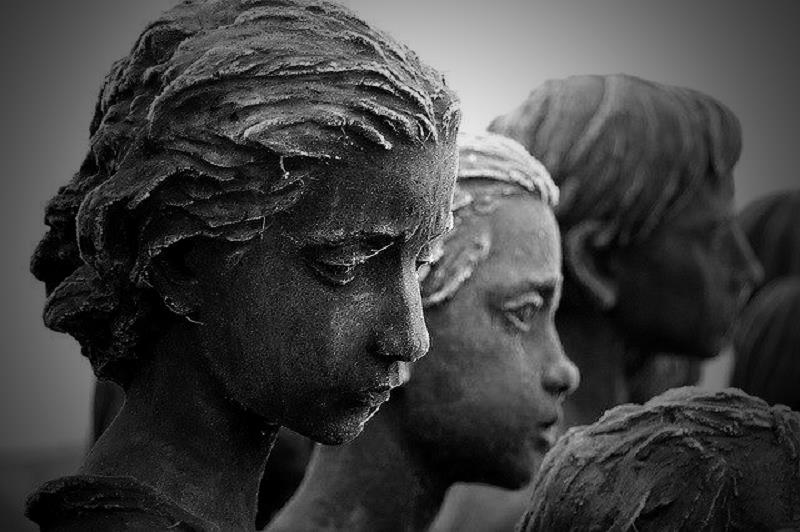
In the end 173 men were killed, 184 women were sent to camps, and 105 children were shipped off to another. A few of the small children were considered viable for “Germanisation” and they were sent to live with the families of SS officers. Unfortunately the remaining 82 were seen as nothing but a burden and they were sent to the Chełmno concentration camp where they were gassed.
After the war ended Lidice had become a symbol of the Nazi atrocities and those that survived (153 women and 17 children) bravely rebuilt their demolished village.
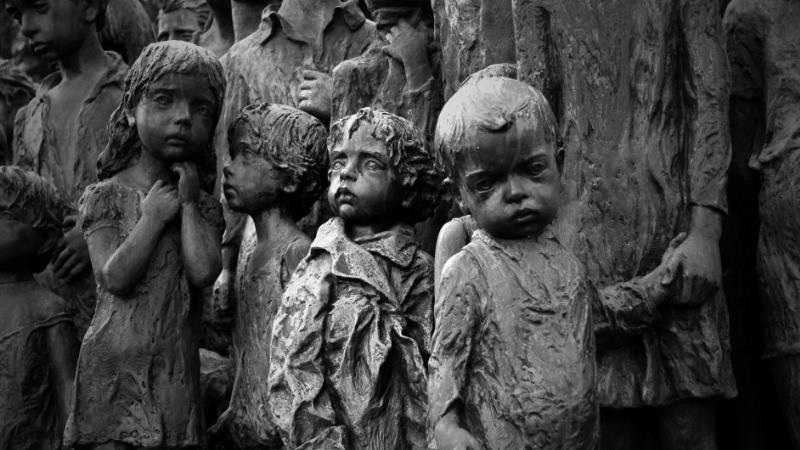
In memory of the events of World War II the memorial that stands today has 82 figures in honor of the 82 children that were sent to the gas chambers. The work took 20 years to complete and the original artist, Marie Uchytilová, died before it could be completed, however others stepped in to finish it. The result is a stark bronze work with the life-size children staring towards a future they would never live to see.
As you listen, note that from its gripping opening measures, the Memorial to Lidice creates a striking emotional “inner world,” with a jolting bitonality—the superimposition of two jarringly conflicting keys, C minor and C-sharp minor. Throughout the work’s development Martinů quotes a hymn to St. Wenceslaus, the patron of Bohemia. After a central section of heightened intensity, the initial adagio returns, bringing a hopeful quotation: the “victory call” from the opening of Beethoven’s Fifth Symphony. The piece then closes in C major.
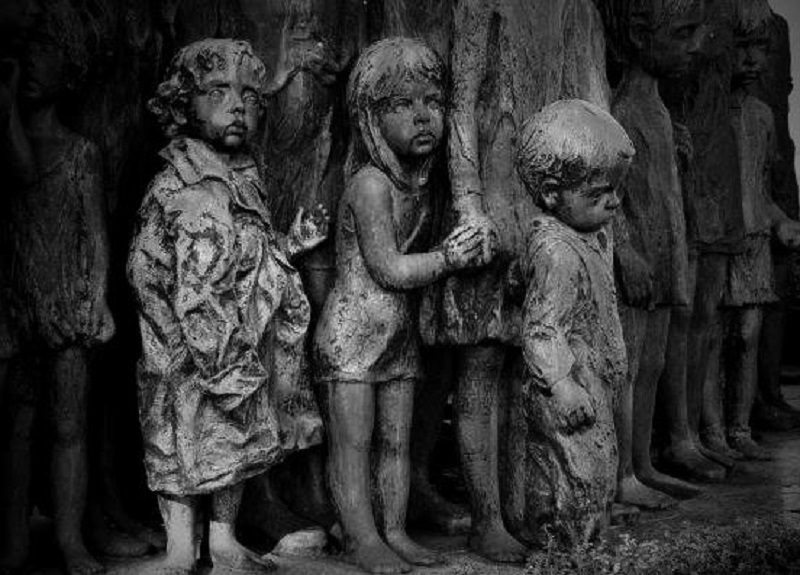
Bohuslav Martinů’s Memorial to Lidice was written in 1943, after the Czech village of Lidice had been razed to the ground by the Nazis one year before. The American League of Composers in 1943 asked several prominent composers to write music based on the incident in World War II, which was then raging. That call and horrific atrocity has led many artists to create diverse works on this subject right up to the present.
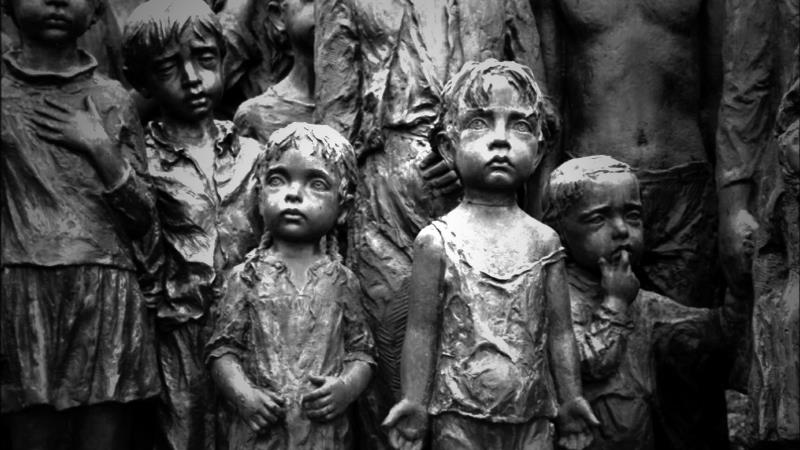
The Government-in-Exile requested a Lidice commemorative work from Martinů in 1942, and the composer attempted to write one, but discarded it. Instead, he expressed his personal outrage and grief in the tragic slow movement of his First Symphony (1942).
Hitler’s appointment of Heydrich in September 1941 as Deputy Reich Protector of the Protectorate of Bohemia and Moravia (the Czech part of Czechoslovakia) was for the express purpose of ridding the area of its Jewish population and instituting harsh crackdowns on any anti-German activity.
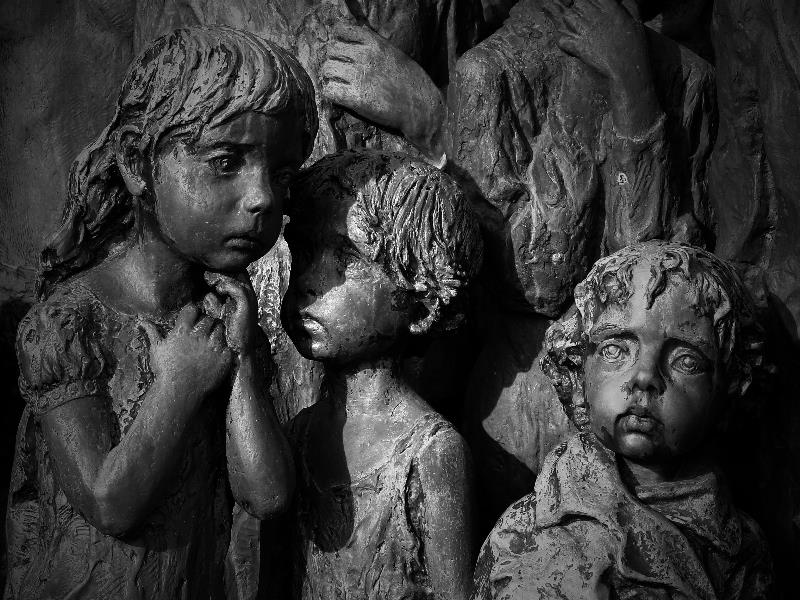
The Czech Government-in-Exile’s president, Edvard Benes, authorized Heydrich’s assassination. Britain’s Special Operations Executive (SOE) trained and flew in an assassination team of Czech patriots who ambushed the security-lax Heydrich’s Mercedes on May 27, 1942, with grenade and machine gun fire. The two assassins, Jan Kubis and Josef Gabcik, committed suicide after a gun-battle with the SS; they had been sold out by another SOE agent. Heydrich died of his wounds on June 4. Meanwhile, the SS had caught another SOE agent and found on him a document mentioning Lidice and Lezáky.
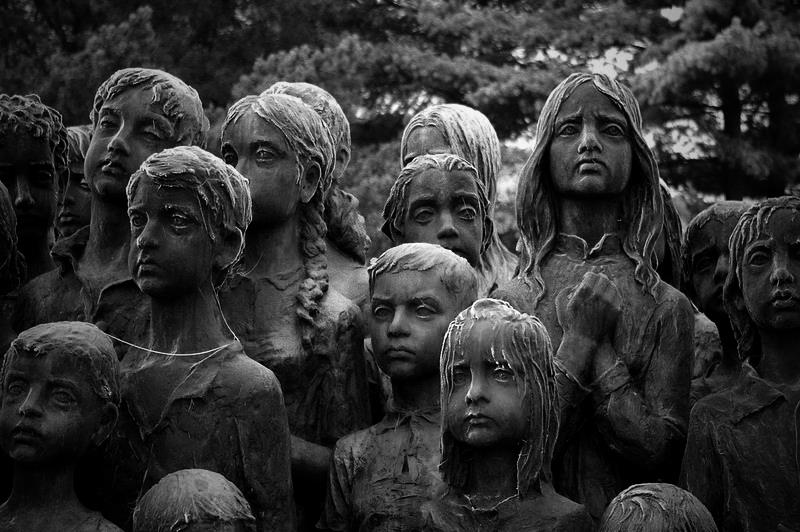
In reprisal, Hitler ordered the towns wiped off the map. All males were shot, the women were taken to Ravensbrück Concentration Camp, and the children were removed.
Over 2,000 were killed in all in reprisal for Heydrich’s murder.
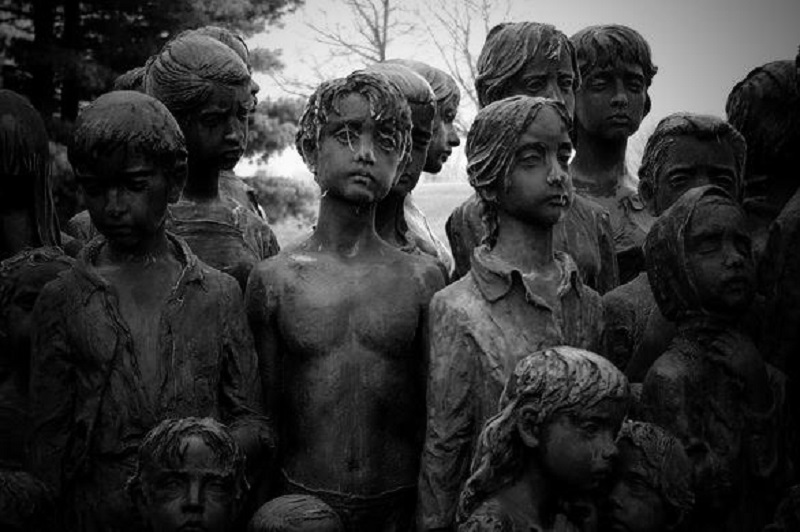
On year later, Martinů accepted the commission from the American League of Composers and went back to re-think an idea he had tried the year before at the request of the Czech Government-in-Exile in London, to write a piece commemorating the vicious Nazi reprisals of June 9 and 10, 1942, wiping out the towns of Lidice and Lezáky to retaliate for the assassination of Reinhard Heydrich.
After the assassination, the Nazis imposed martial law. After the village of Lidice was razed and all male inhabitants aged over 15 were shot, Gestapo agents found a radio transmitter in Ležáky which belonged to Operation Silver A. Alfréd Bartoš, the leader of resistance group Silver A, committed suicide shortly thereafter.
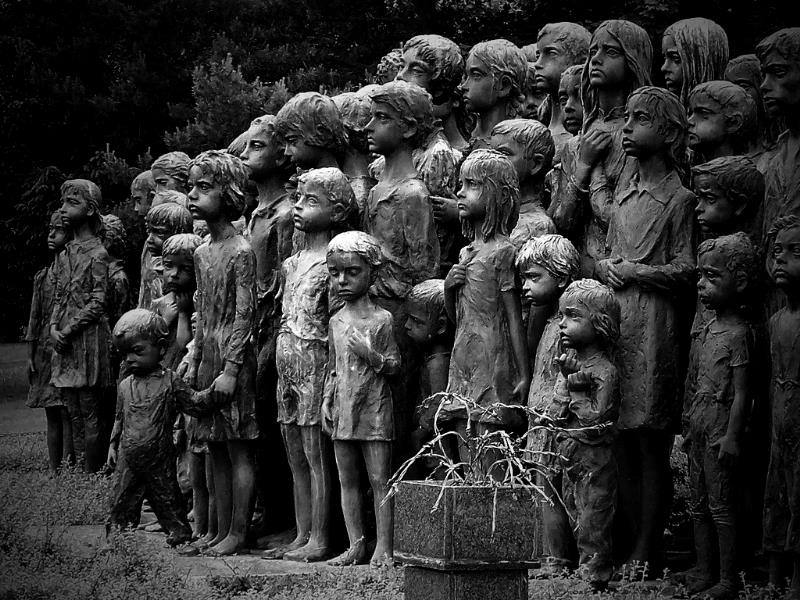
On June 24, approximately 500 SS troops and policemen surrounded Ležáky, removed all inhabitants, and the village was destroyed. All 33 adults (both men and women) were shot. Thirteen children were spared. A June 26 press release announced the outcome. In mid-December 1943, the Ležáky ruins were removed by 65 men from Nazi work camps.
Of the thirteen Ležáky children, sisters Jarmila and Marie Šťulík were selected for “Germanization”; both were located and returned to their families after the war. The two girls were the only two children from the Ležáky valley who lived to see the end of World War II.
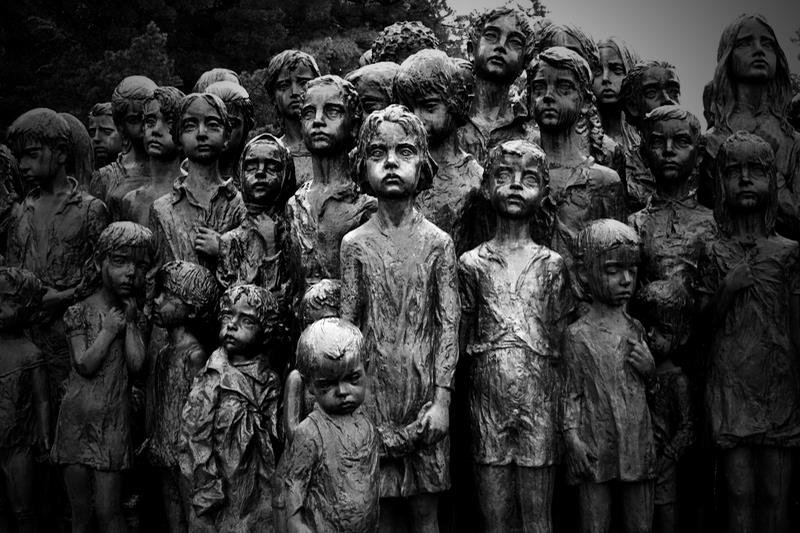
They never saw their parents again, though. Their mother Marie Šťulíková was arrested for assisting the Silver A team paratroopers on June 22, 1942. Their father Josef Šťulík turned himself in at the gendarme station in Vrbatův Kostelec on the same day following a Gestapo call. “Before that, the Gestapo searched for him without success; he was hiding near the Včelákov cemetery. They let him know through our mother to show up by a certain date, otherwise all of Včelákov and its vicinity would be leveled,” Jarmila Doležalová recounts.
The girls’ grandparents lived in Včelákov at a family farm. After the war, the Šťulík sisers’ grandfather František Pelikán was the only one besides them who returned to Včelákov. Their uncle Václav also survived the Nazi terror; he was arrested on June 22, 1944, but he was soon released reportedly based on an intercession and on the grounds of young age (he was 14). He ran the family farm until the end of the war. You can read more about that here.
The remaining eleven children of Ležáky were sent to the Chełmno extermination camp, where they were gassed in summer 1942, together with the one remaining girl from Lidice. Unlike Lidice, Ležáky was not rebuilt after the war, and only memorials remain today.
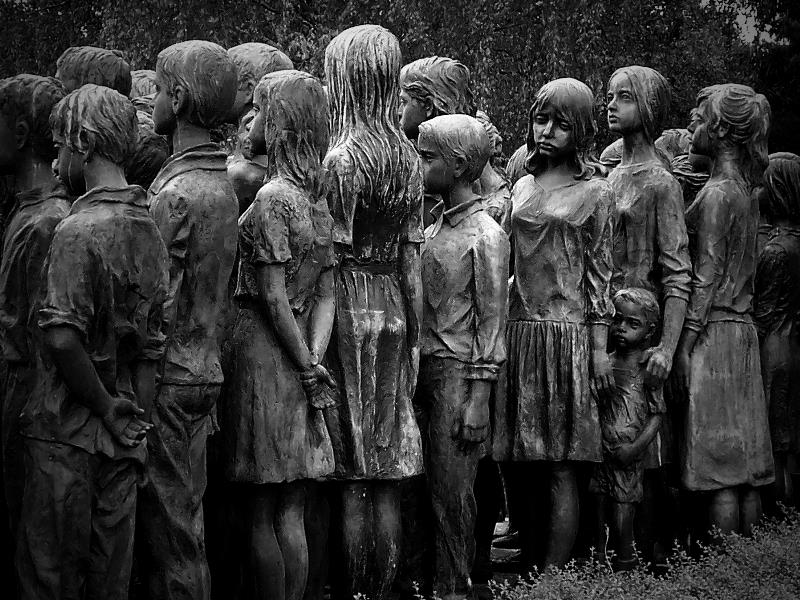
The 1943 composition of Memorial to Lidice is a single individual movement in slow tempos, full of a sense of tragedy but above all noble and elevated in its mourning. In effect it is indeed like a stately and peaceful monument.
It begins with a dark C minor chord but quickly slips into C sharp minor. Cadences of the St. Wenceslas Chorale, the traditional resistance hymn of the Czechs, appear in the second movement (Martinů had also used it in Symphony No. 1.) The middle part of the composition shifts to the heroic key of E flat to signal continued resistance. The dark opening Adagio returns with its oppressive feeling, but now the opening motive of Beethoven’s Fifth Symphony, which by now was known to all anti-Nazi Resistance as the symbol of “V for Victory,” cuts through the dark orchestration powerfully. With an assurance of ultimate victory, the music ends quietly in a peaceful C major.
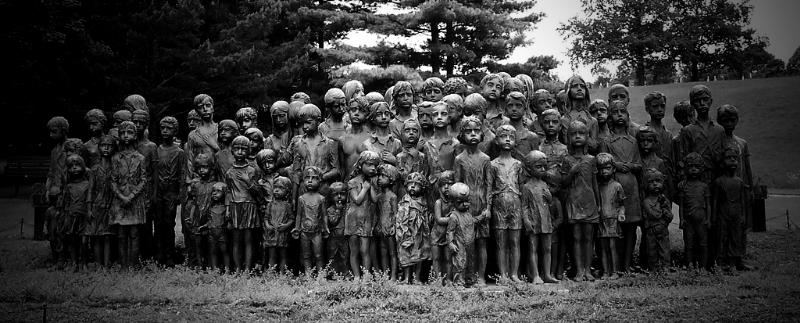
The work was premiered by Artur Rodzinski and the New York Philharmonic in Carnegie Hall on October 28, 1943, the 25th anniversary of the proclamation of the Czechoslovak Republic. Eugene Ormandy led the Philadelphians in the work five weeks later.
Memorial to Lidice was first played in Czechoslovakia by the Czech Philharmonic under Raphael Kubelik on March 14, 1946, the anniversary of the last day before Germany completed its occupation of the country in 1939.
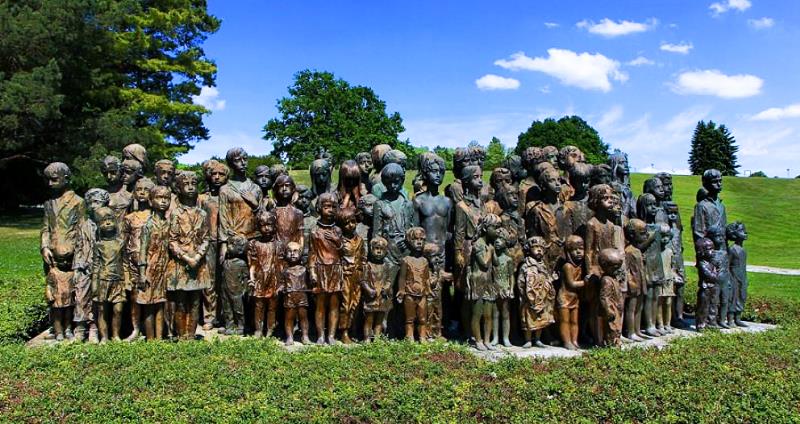
Today, Martinů’s piece is one of the most important and internationally best-known compositions inspired by the Lidice tragedy.
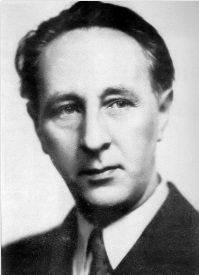 Bohuslav Jan Martinů (December 8, 1890 – August 28, 1959) was a Czech composer of modern classical music. Martinů wrote 6 symphonies, 15 operas, 14 ballet scores and a large body of orchestral, chamber, vocal and instrumental works.
Bohuslav Jan Martinů (December 8, 1890 – August 28, 1959) was a Czech composer of modern classical music. Martinů wrote 6 symphonies, 15 operas, 14 ballet scores and a large body of orchestral, chamber, vocal and instrumental works.
Driven from his adopted city of Paris by the Nazis, Martinů settled in the U.S. and watched from a distance as the horrifying events of the Second World War unfolded in Europe. He had already been uprooted before in his life. Born and raised in Policka, a village in a picturesque region of eastern Bohemia, he began his career as a top-rank violinist, studying at the Prague Conservatory in the early years of this century and joining the violin section of the Czech Philharmonic in 1918. But his ambition to compose became all-consuming, and by the early 1920s his own compositions—which by then already numbered nearly 200—were still little known in his own country. He moved to Paris in 1923, where he lived modestly for nearly two decades. His mentors were Roussel and Stravinsky, but he also studied jazz and mingled in a wide variety of musical and artistic circles.
By the late 1930s he had gained renown in Europe as a composer whose music merged the rhythmic vitality of the Franco-Russian sphere with the neoclassical trends of the ’20s—and with idioms from Czech folklore as well. Just when it seemed that success might come his way, the Nazis blacklisted Martinů and he fled. Serge Koussevitzky, conductor of the Boston Symphony, included one of his works on a 1942 concert of “Czechoslovak Immortals of Symphonic Music”—in the distinguished company of Smetana, Dvorák, and Janácek. That year Koussevitzky also commissioned him to write a symphony—the First, which was performed in Boston in April 1943.
Koussevitzky also arranged for Martinů’s employment, at the Berkshire Music Center (now Tanglewood). The composer spent the next years writing music and teaching in New York, Vermont, Massachusetts, and Connecticut. But his mind was clearly elsewhere; the Memorial to Lidice was one of several works he composed that reflected his preoccupation with events “back home.” He wrote it in just a matter of days in August 1943 in Darien, Connecticut. The American League of Composers commissioned Martinů, together with other composers, to write works relating to the war.
The above images of the children are from the Children’s War Victims Monument at Tokajická 152, Lidice, Czech Republic at the Lidice Memorial. The Ministry of Culture of the Czech Republic, keeps lasting memory of the annihilation of Lidice, and also administers the National Heritage Site Ležáky and Heritage Site Lety. Learn more about it here.
Czech composer Bohuslav Martinů’s emotionally powerful and devastatingly poignant Memorial to Lidice is one of three wartime works that serve both as commemorative monuments and deeply felt commentaries. You may purchase Martinů: Memorial to Lidice / Field Mass / Symphony No. 4 performed by the Czech Philharmonic Orchestra at this link.
Special thanks to Joseph Stevenson, Paul J. Horsley, Christopher H. Gibbs and The Philadelphia Orchestra Association.
For more information on this subject, read our post, Resistance Has a Code Name: Operation Anthropoid.
If you have not already subscribed to get TresBohemes.com delivered to your inbox, please use the form below now so you never miss another post.
Remember, we rely solely on your donations to keep the project going.




